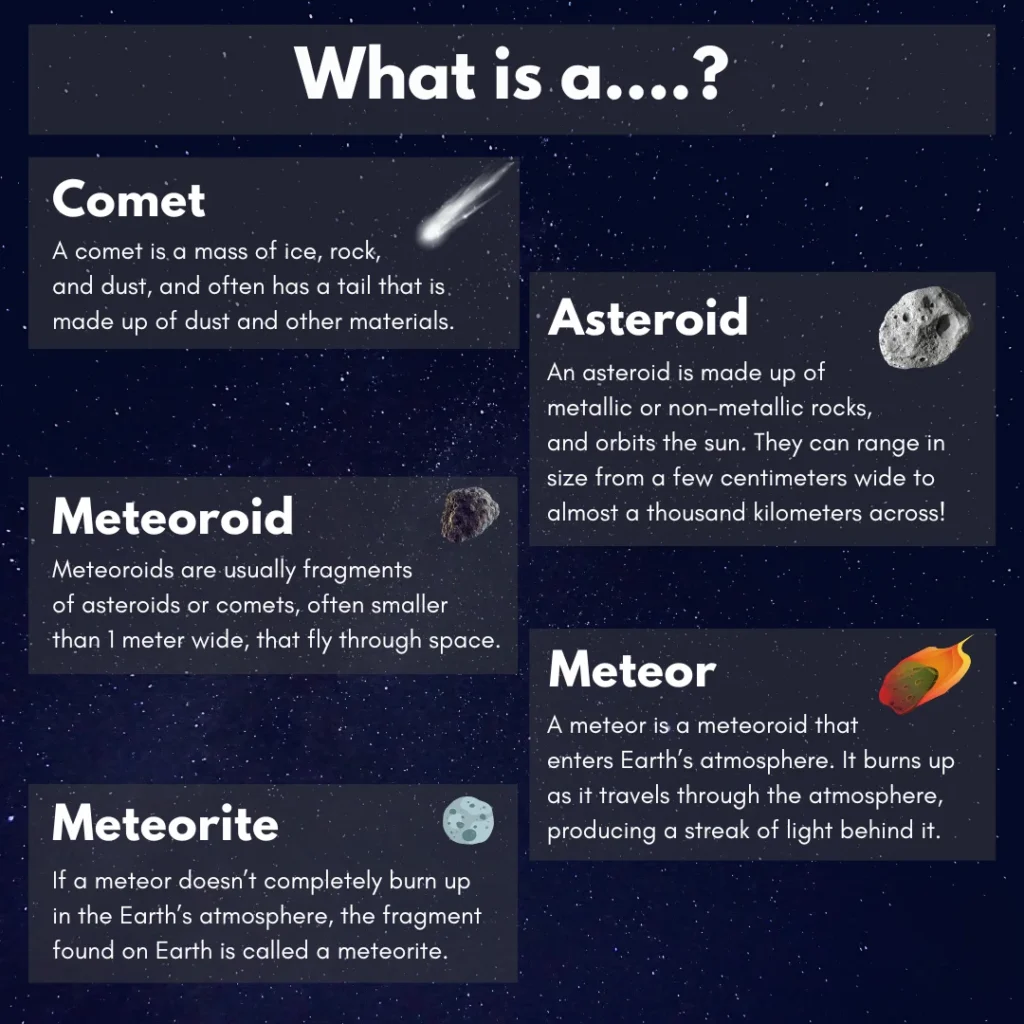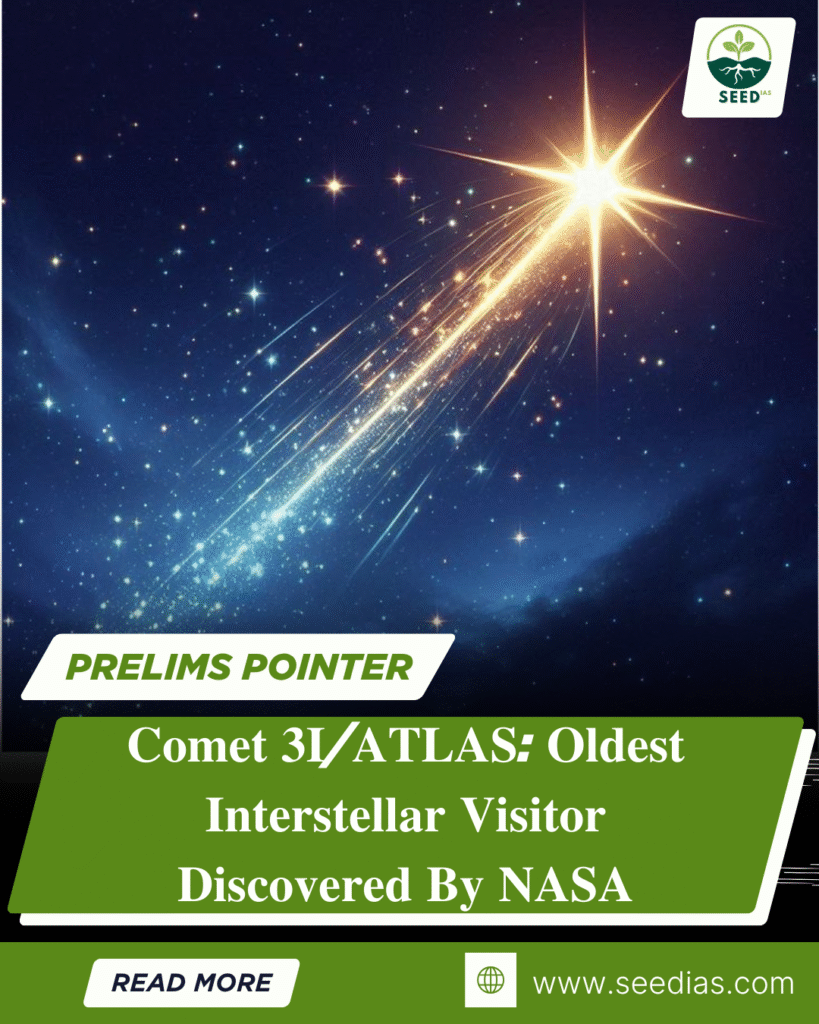Why in NEWS
NASA-funded ATLAS telescope in Chile discovered an interstellar comet, named 3I/ATLAS, originating from the constellation Sagittarius.
Key Terms and Concepts
| Term | Explanation |
|---|---|
| 3I/ATLAS | Third Interstellar Object (ISO) after ‘Oumuamua (1I) and Borisov (2I) |
| Interstellar Object (ISO) | A celestial body originating from outside the Solar System |
| Hyperbolic Orbit | An open trajectory confirming the object is not gravitationally bound to the Sun |
| Thick Disk of Milky Way | A galactic region composed of older, metal-poor stars; differs from the younger thin disk |
| Ōtautahi–Oxford model | Simulation model used to trace the comet’s trajectory and estimate age |
Details about 3I/ATLAS
| Feature | Description |
|---|---|
| Discovery Location | ATLAS telescope, Chile |
| Orbital Speed | 57–68 km/s, hyperbolic path |
| Likely Origin | Thick disk of the Milky Way |
| Estimated Age | Over 7 billion years (older than the Solar System) |
| Physical Features | Active coma, possible tail, nucleus size ~10–30 km |
| Chemical Composition | Contains water ice and complex organic molecules |
| Comparative Significance | First ISO from thick disk, unlike 1I and 2I from thin disk |
| Scientific Importance | Offers clues about galactic evolution, pre-solar materials, and panspermia theories |

In a nutshell
Mnemonic: “𝐀𝐓𝐋𝐀𝐒 𝟑𝐈 𝐓𝐑𝐀𝐂𝐄𝐒 𝐓𝐇𝐈𝐂𝐊 𝐃𝐈𝐒𝐊”
ATLAS detects 3rd Interstellar Object with ancient origin from Milky Way’s thick disk; oldest comet observed yet.
Prelims Questions
- Which of the following statements about 3I/ATLAS is correct?
A) It is the first interstellar object discovered by humans
B) It originated from the thin disk of the Milky Way
C) It follows a hyperbolic trajectory, indicating interstellar origin
D) Its nucleus size is smaller than 2I/Borisov - Match the following interstellar objects with their year of discovery:
A. 1I/‘Oumuamua – 1. 2019
B. 2I/Borisov – 2. 2025
C. 3I/ATLAS – 3. 2017
Choose the correct match:
A) A-3, B-1, C-2
B) A-1, B-3, C-2
C) A-2, B-1, C-3
D) A-3, B-2, C-1 - The term “thick disk” in astronomy refers to:
A) A highly dense planetary ring system
B) The region of the galaxy with newer star formations
C) A zone with ancient, metal-poor stars in the Milky Way
D) A black hole’s surrounding debris layer
Prelims Answer Key
| Ques | Answer | Explanation |
|---|---|---|
| 1 | C | Hyperbolic orbit confirms its interstellar origin. |
| 2 | A | ‘Oumuamua – 2017, Borisov – 2019, ATLAS – 2025. |
| 3 | C | Thick disk contains older stars, unlike the thin disk’s younger population. |
















